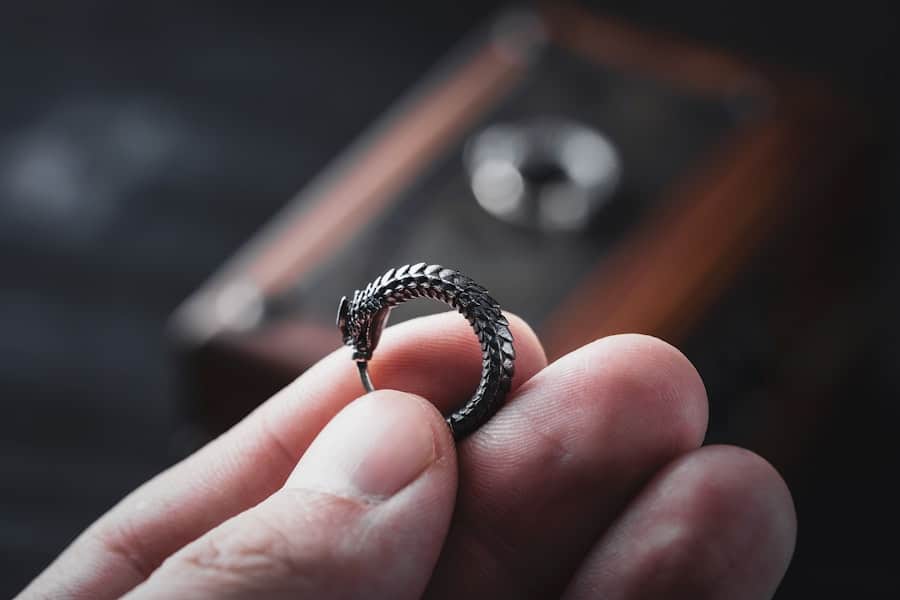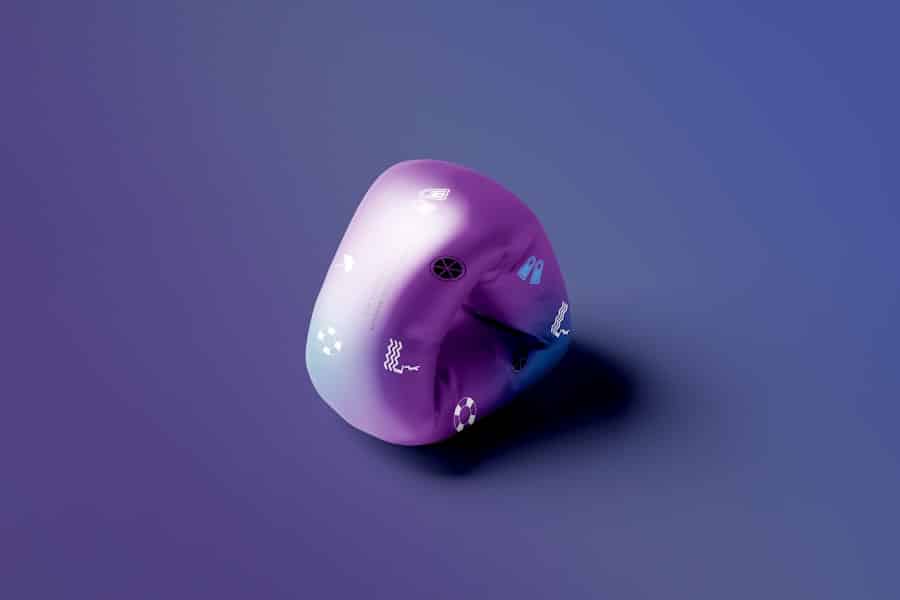In recent years, the proliferation of wearable technology has transformed the way individuals monitor their health and wellness. Among these innovations, smart rings have emerged as a compact and stylish alternative to traditional fitness trackers and smartwatches. These small, unobtrusive devices are designed to be worn on the finger, offering a range of functionalities that extend beyond mere timekeeping.
Smart rings are equipped with advanced sensors that can track various health metrics, including heart rate, activity levels, and, notably, sleep quality. Their discreet design allows users to seamlessly integrate them into their daily lives without the bulkiness often associated with other wearables. The appeal of smart rings lies not only in their functionality but also in their aesthetic versatility.
Available in various styles and materials, they can be worn as fashion accessories while serving a practical purpose. This duality has attracted a diverse user base, from fitness enthusiasts seeking to optimize their performance to individuals simply looking to improve their overall well-being. As sleep quality has become a focal point of health discussions, smart rings have positioned themselves as valuable tools for those aiming to gain insights into their sleep patterns and make informed adjustments to enhance their rest.
Key Takeaways
- Smart rings are wearable devices that can track various health metrics, including sleep quality.
- Smart rings track sleep quality by monitoring factors such as heart rate, body temperature, and movement during sleep.
- Using smart rings for sleep analysis can help users understand their sleep patterns, identify sleep disturbances, and make lifestyle changes to improve sleep quality.
- Smart rings offer advantages over other sleep tracking devices, such as being less intrusive and more comfortable to wear during sleep.
- Potential drawbacks of using smart rings for sleep analysis include limited accuracy and the need for regular charging.
How Smart Rings Track Sleep Quality
Smart rings utilize a combination of sensors and algorithms to monitor sleep quality effectively. At the core of their functionality is the ability to measure physiological signals such as heart rate variability (HRV), body temperature, and movement patterns throughout the night. By analyzing these metrics, smart rings can determine different sleep stages, including light sleep, deep sleep, and REM (rapid eye movement) sleep.
This detailed breakdown provides users with a comprehensive view of their sleep architecture, allowing them to identify trends and potential areas for improvement. One of the key technologies employed in smart rings is photoplethysmography (PPG), which uses light to measure blood flow. When worn on the finger, the ring emits light that penetrates the skin and reflects off blood vessels.
The variations in light absorption are then translated into heart rate data, which is crucial for assessing sleep quality. Additionally, accelerometers within the ring track movement during sleep, helping to distinguish between restful periods and times of restlessness or wakefulness. This combination of data enables users to receive personalized insights into their sleep habits, fostering a deeper understanding of how lifestyle factors may influence their nightly rest.
Benefits of Using Smart Rings for Sleep Analysis
The benefits of using smart rings for sleep analysis extend beyond mere data collection; they empower users to take actionable steps toward improving their sleep quality. One significant advantage is the ability to track sleep trends over time. Unlike one-off sleep studies or sporadic self-assessments, smart rings provide continuous monitoring that can reveal patterns that might otherwise go unnoticed.
For instance, users may discover correlations between their daily activities—such as exercise or caffeine consumption—and their sleep quality, enabling them to make informed lifestyle adjustments. Moreover, many smart rings come equipped with companion apps that offer detailed insights and recommendations based on the collected data. These applications often include features such as sleep score metrics, which summarize overall sleep quality in an easily digestible format.
Users can set goals for improving their sleep hygiene and receive tailored suggestions on optimizing their bedtime routines. This level of personalization not only enhances user engagement but also fosters a proactive approach to health management, encouraging individuals to prioritize restorative sleep as part of their overall wellness strategy.
Comparison with Other Sleep Tracking Devices
When comparing smart rings to other sleep tracking devices, such as fitness bands and smartwatches, several distinctions emerge that highlight the unique advantages of rings. One notable difference is the form factor; while fitness bands and smartwatches are often bulkier and may require users to adjust their clothing or accessories for comfort during sleep, smart rings are lightweight and unobtrusive. This makes them particularly appealing for individuals who find it uncomfortable to wear larger devices while sleeping.
Additionally, the accuracy of sleep tracking can vary significantly among different devices. Smart rings often leverage advanced sensor technology that can provide more precise readings of heart rate variability and movement patterns compared to some fitness trackers that may rely solely on accelerometer data. For example, while a smartwatch might estimate sleep stages based on movement alone, a smart ring can combine movement data with heart rate information for a more nuanced understanding of sleep quality.
This enhanced accuracy can lead to more reliable insights and recommendations for users seeking to improve their sleep habits.
Potential Drawbacks of Smart Rings for Sleep Analysis
Despite their many advantages, smart rings are not without potential drawbacks when it comes to sleep analysis. One concern is battery life; while many smart rings are designed for extended use, continuous monitoring can drain batteries more quickly than expected. Users may find themselves needing to charge their devices more frequently than they would like, which could disrupt the continuity of data collection if they forget to recharge before bed.
Another consideration is the accuracy of the data collected by smart rings. While they generally provide reliable insights, factors such as improper fit or external environmental conditions can affect sensor performance. For instance, if a ring is too loose or too tight, it may not accurately measure heart rate or movement patterns during sleep.
Additionally, variations in skin temperature or moisture levels can impact the effectiveness of photoplethysmography readings. Users must be aware of these limitations and consider them when interpreting their sleep data.
Future Developments in Smart Ring Technology for Sleep Analysis
As technology continues to evolve at a rapid pace, the future of smart ring technology holds exciting possibilities for enhancing sleep analysis capabilities. One area of development is the integration of artificial intelligence (AI) algorithms that can analyze vast amounts of data collected from users over time. By leveraging machine learning techniques, future smart rings could provide even more personalized insights and recommendations based on individual sleep patterns and lifestyle factors.
Moreover, advancements in sensor technology may lead to improved accuracy in measuring additional physiological parameters related to sleep quality. For instance, future iterations of smart rings could incorporate sensors capable of monitoring blood oxygen levels or even detecting snoring patterns. Such features would provide users with a more comprehensive understanding of their sleep health and could potentially alert them to underlying issues such as sleep apnea or other respiratory conditions.
Tips for Using Smart Rings to Improve Sleep Quality
To maximize the benefits of using smart rings for sleep analysis, users should consider implementing several best practices that can enhance both the accuracy of data collection and overall sleep quality. First and foremost, ensuring a proper fit is crucial; the ring should be snug enough to maintain contact with the skin without causing discomfort. This will help optimize sensor performance and ensure accurate readings throughout the night.
Establishing a consistent bedtime routine is another effective strategy for improving sleep quality. Users can leverage insights gained from their smart rings to identify optimal bedtimes based on when they typically achieve the best sleep scores. Incorporating relaxation techniques such as meditation or gentle stretching before bed can also promote better rest.
Additionally, users should pay attention to lifestyle factors that may impact their sleep quality—such as caffeine intake or screen time before bed—and make adjustments accordingly based on the feedback provided by their smart ring.
The Role of Smart Rings in Improving Sleep Quality
Smart rings have carved out a niche in the realm of wearable technology by offering a unique blend of style and functionality tailored specifically for health monitoring.
As technology continues to advance, smart rings are poised to become even more sophisticated tools for understanding and improving sleep quality.
By embracing these innovative devices and integrating them into daily routines, individuals can take proactive steps toward enhancing their overall well-being through better sleep hygiene. The journey toward improved rest is not merely about tracking data; it involves understanding oneself and making conscious choices that foster restorative sleep. In this context, smart rings serve as both companions and guides on the path toward achieving optimal health through quality rest.
In a recent article from How-To Geek, the potential of smart rings for sleep quality analysis was discussed in depth. The article highlighted the various features and benefits of using smart rings to track and analyze sleep patterns. Additionally, it mentioned how these devices can provide valuable insights into improving overall sleep quality. For more information on the best software for fault tree analysis in 2023, check out another informative article from Enicomp.
FAQs
What are smart rings for sleep quality analysis?
Smart rings for sleep quality analysis are wearable devices that are designed to track and analyze various aspects of sleep, such as duration, quality, and patterns. These rings use sensors to monitor physiological data and provide insights into the wearer’s sleep habits.
How do smart rings for sleep quality analysis work?
Smart rings for sleep quality analysis typically use sensors to measure parameters such as heart rate, body temperature, and movement during sleep. The data collected is then analyzed to provide information about the wearer’s sleep patterns, including the duration of different sleep stages and the overall quality of sleep.
What are the potential benefits of using smart rings for sleep quality analysis?
The potential benefits of using smart rings for sleep quality analysis include gaining a better understanding of one’s sleep patterns, identifying factors that may be affecting sleep quality, and making informed decisions to improve overall sleep health. These devices can also provide personalized recommendations for optimizing sleep based on the data collected.
Are there any limitations to using smart rings for sleep quality analysis?
Some limitations of using smart rings for sleep quality analysis may include accuracy of data collection, comfort and fit of the device, and potential privacy concerns related to the collection and storage of personal health data. Additionally, these devices may not be suitable for individuals with certain medical conditions or those who require more comprehensive sleep monitoring.
What should one consider when choosing a smart ring for sleep quality analysis?
When choosing a smart ring for sleep quality analysis, it is important to consider factors such as the accuracy of sleep tracking, compatibility with other devices or apps, battery life, comfort and fit, and the availability of features that align with individual sleep tracking needs. It is also important to consider the privacy and security measures in place for the handling of personal health data.



